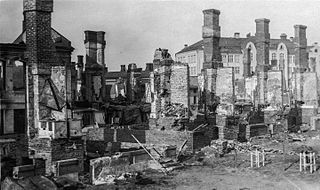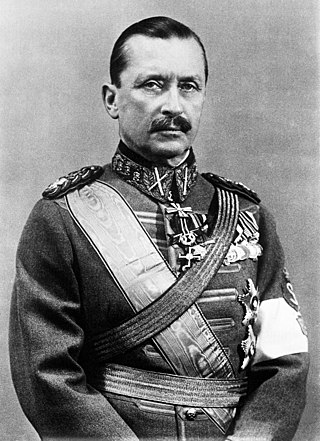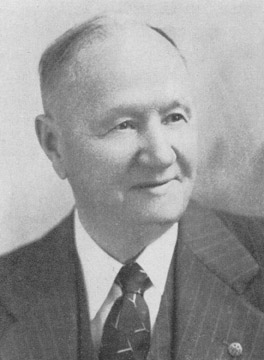Related Research Articles

The Finnish Civil War was a civil war in Finland in 1918 fought for the leadership and control of the country between White Finland and the Finnish Socialist Workers' Republic during the country's transition from a grand duchy ruled by the Russian Empire to a fully independent state. The clashes took place in the context of the national, political, and social turmoil caused by World War I in Europe. The war was fought between the Red Guards, led by a section of the Social Democratic Party, and the White Guards, conducted by the senate and those who opposed socialism with assistance late in the war by the German Imperial Army at the request of the Finnish civil government. The paramilitary Red Guards, which were composed of industrial and agrarian workers, controlled the cities and industrial centres of southern Finland. The paramilitary White Guards, which consisted of land owners and those in the middle and upper classes, controlled rural central and northern Finland, and were led by General C. G. E. Mannerheim.

Kyösti Kallio was a Finnish politician who served as the fourth president of Finland from 1937 to 1940. His presidency included leading the country through the Winter War; while he relinquished the post of commander-in-chief to Carl Gustaf Emil Mannerheim, he played a role as a spiritual leader. After the war, he became both the first President of Finland to resign and the only one to die in office, dying of a heart attack while returning home after submitting his resignation.

Carl Gustaf Emil Mannerheim was a Finnish military commander, aristocrat, and statesman. He served as the military leader of the Whites in the Finnish Civil War (1918), as Regent of Finland (1918–1919), as commander-in-chief of the Finnish Defence Forces during the period of World War II (1939–1945), and as the sixth president of Finland (1944–1946). He became Finland's only field marshal in 1933 and was appointed honorary Marshal of Finland in 1942.

Kaarlo Juho Ståhlberg was a Finnish jurist and academic who was one of the most important pioneers of republicanism in the country. He was the first president of Finland (1919–1925) and a liberal nationalist.

Pehr Evind Svinhufvud af Qvalstad was the third president of Finland from 1931 to 1937. Serving as a lawyer, judge, and politician in the Grand Duchy of Finland, which was at that time an autonomous state under the Russian Empire’s rule, Svinhufvud played a major role in the movement for Finnish independence. He was the one who presented the Declaration of Independence to the Parliament.

The Senate of Finland combined the functions of cabinet and supreme court in the Grand Duchy of Finland from 1816 to 1917 and in independent Finland from 1917 to 1918.

Antti Oskari Tokoi was a Finnish socialist who served as a leader of the Social Democratic Party of Finland. In 1917 Tokoi acted as a Chairman of the Senate of Finland and thus he was the world’s first social democratic leader of the government. During the short-lived Revolution of 1918, Tokoi participated as a leading figure in the revolutionary government. Tokoi later emigrated to the United States, where he served as the long-time editor of Raivaaja, the newspaper of the Finnish Socialist Federation.

The Finnish Declaration of Independence was adopted by the Parliament of Finland on 6 December 1917. It declared Finland to be independent from Russia, with reference to a bill simultaneously delivered to the Parliament to make Finland an independent republic instead.

Nikolai Nikolayevich Yudenich was a commander of the Russian Imperial Army during World War I. He was a leader of the anti-communist White movement in northwestern Russia during the Civil War.

Finland declared its independence on 6 December 1917. The formal Declaration of Independence was only part of the long process leading to the independence of Finland.

The Kingdom of Finland was a failed attempt to establish a monarchy in Finland in the aftermath of the Finnish Declaration of Independence from Russia in December 1917 and the Finnish Civil War from January to May 1918. The victorious Whites in the Parliament of Finland began the process of turning Finland into a kingdom and creating a monarchy. Although the country was legally a kingdom headed by a regent for over a year, the king-elect Friedrich Karl never reigned nor came to Finland following Germany's defeat in World War I. Republican victories in subsequent elections resulted in the country becoming a republic.
Parliamentary elections were held in the Grand Duchy of Finland on 1 and 3 July 1916.

The Finnish People's Delegation was the government of the Finnish Socialist Workers' Republic created by a group of members in the Social Democratic Party of Finland during the Finnish Civil War from January to May 1918.

White Finland, usually shortened to Whites, were the refugee and provisional government following the October Revolution and those forces who fought for and under Pehr Evind Svinhufvud's first senate, in opposition to the "Reds", the Finnish Socialist Workers' Republic, during the Finnish Civil War in 1918.

The revolutions of 1917–1923 were a revolutionary wave that included political unrest and armed revolts around the world inspired by the success of the Russian Revolution and the disorder created by the aftermath of World War I. The uprisings were mainly socialist or anti-colonial in nature. Most socialist revolts failed to create lasting socialist states. The revolutions had lasting effects in shaping the future European political landscape, with, for example, the collapse of the German Empire and the dissolution of Austria-Hungary.
Events from the year 1917 in Russia.
A Reichsverweser or imperial regent represented a monarch when there was a vacancy in the throne, such as during a prolonged absence or in the period between the monarch's death and the accession of a successor. The term Verweser comes from the Old High German firwesan and means "for or in the place of a person". The plural form is the same as the singular.

Events in the year 1917 in Finland.
References
- ↑ Jorma Keränen (1992). Suomen Itsenäistymisen Kronikka (in Finnish). Jyväskylä: Gummerus. pp. 22–201. ISBN 951-20-3800-5.